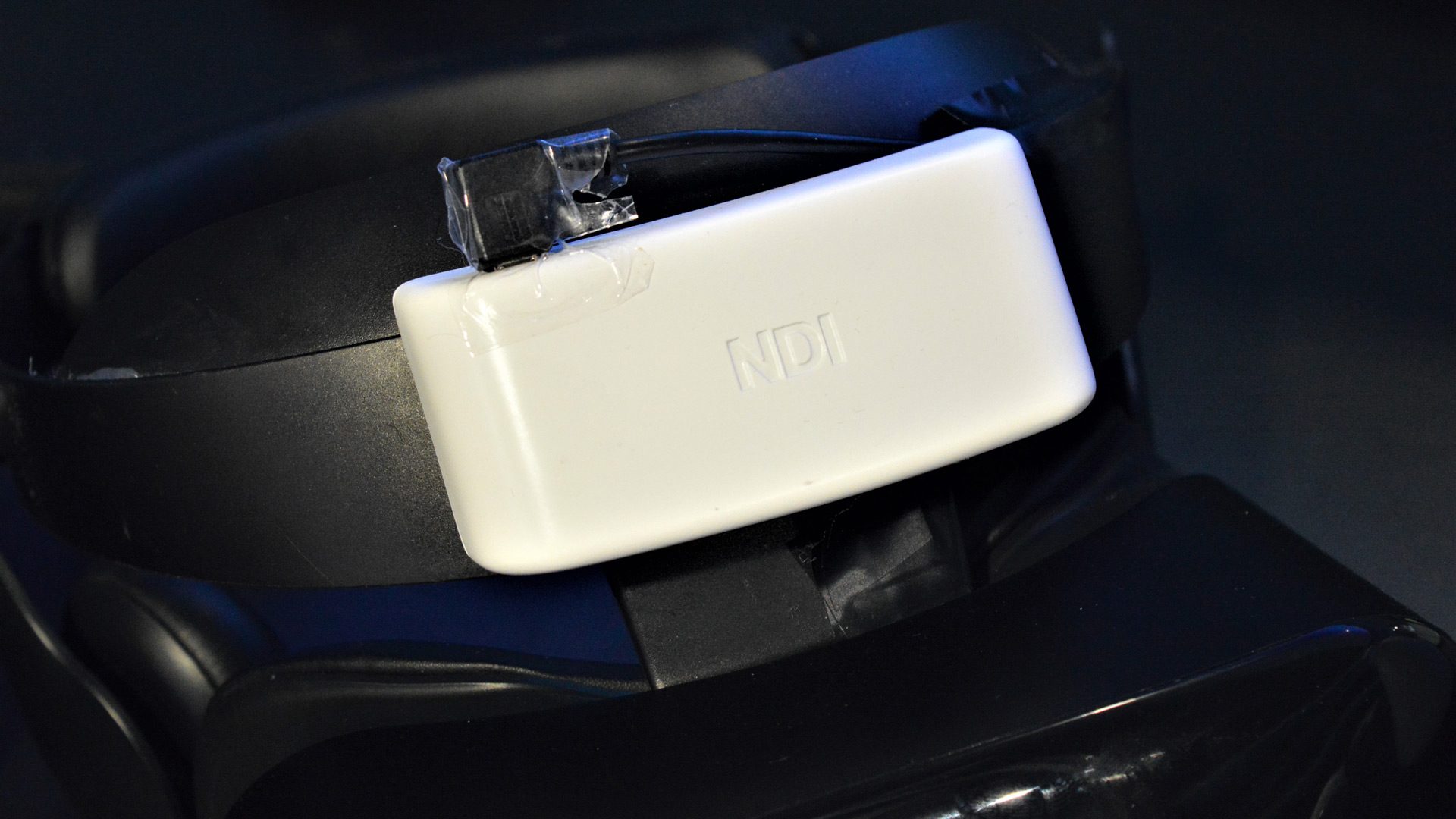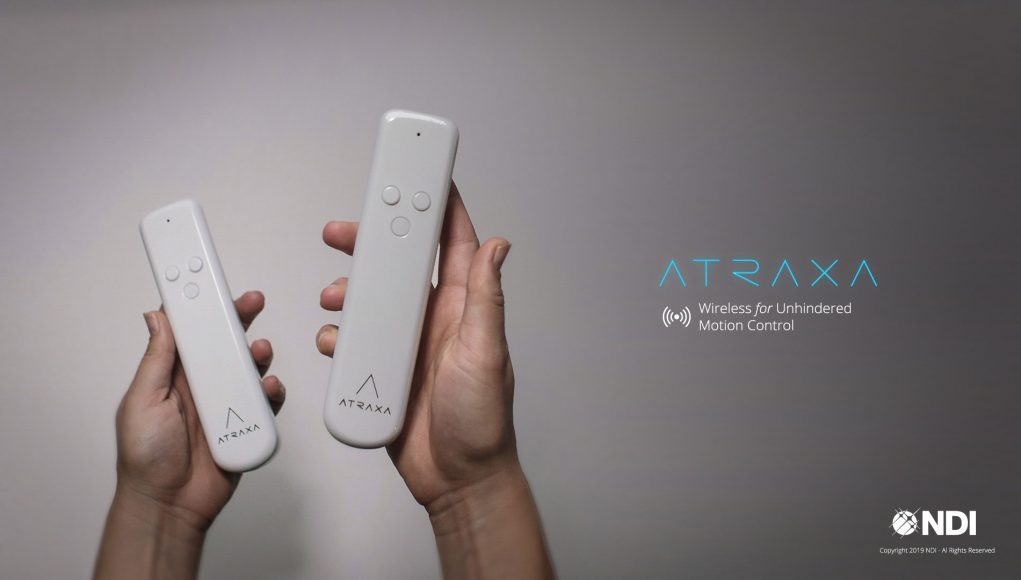Northern Digital is a Waterloo, Canada-based manufacturer of 3D measurement devices, and while the company has mainly focused on creating for various industries such as medicine and aeronautics throughout their 35 years of existence, they’ve recently unveiled a reference design for a magnetic tracking system for VR headsets and controllers.
The reference design, dubbed Atraxa, is available either as an enclosed controller, or as three bare PCB components: two trackers, and a single receiver. Since the reference design is intended for OEMs, you won’t be able to buy this as a consumer, at least not until a third-party company integrates and sells it.
As an enclosed unit, NDI’s prototype housing isn’t anything to write home about in terms of ergonomics, as they look more than a bit like Wiimotes. For the sake of a demo of the company’s underlying tech though, it was more than enough to show what the system was capable of. And unlike Wiimotes, Atraxa tracks the user’s hand movements in 6DOF, and to surprisingly good effect.
How It Works
At NDI’s booth the company was demoing Beat Saber and The Lab, two games I’m all too familiar with. I have a pretty good sense of when I’m hitting Beat Saber’s flying cubes correctly, or where an arrow ought to land when I’m shooting down paper enemies in Long Bow. It was nice to see them using games I both know and love to serve as hard baselines for what the system should be able to do.

After putting the controllers through their paces in both games, it was clear to me the Atraxa controllers offer an acceptable level of performance, even if they fall short of the bar set by Rift and Vive tracking. I was slicing Beat Saber’s blocks with confidence, and bringing the controllers close to my face to nock and fire arrows at the hordes or paper enemies in Long Bow.
It wasn’t enough to be called ‘the perfect solution’, as there were a few brief moments when Atraxa would end up a few centimeters away from their actual position in the physical world before quickly snapping back to their actual anchored positions. This only happened twice during my demo, but it was enough to leave me with the impression that it was somewhere around PSVR’s Move in tracking accuracy and latency, but below all other major PC VR motion controllers out now.

So while Atraxa may not be the most precise solution, developers creating apps for standalone headsets with optical or ultrasonic controller tracking are no doubt designing their games to play well with a limitation in mind: you can’t occlude your controllers, or put them anywhere outside of the camera sensors’ tracking volume and maintain 6DOF. Atraxa’s magnetic tracking on the other hand, doesn’t bump into such occlusion issues. I was pushing the controllers to what would be a clear barrier for others, including putting them behind my back, behind my head, and in the ‘holstered’ position by my sides—all things that often challenge optical inside-out controller tracking because of limited field of view.
An interesting aside: an NDI spokesperson told me Atraxa was already integrated into XR headset(s) on the market today. Just which ones, the company won’t say, although there aren’t many that use this type of EM/IMU sensor fusion. In fact, Magic Leap is so far the only major headset on the market that makes use of the technology in their Magic Leap Control.
So while it may not be a perfect solution, the trade-offs here may very well be justified by hardware producers looking for a ready-built tracking solution that’s capable of truly occlusion-free tracking with accuracy that’s acceptable for the right use-cases.








The tracker module integrates both an IMU and a transmitter coil that generates an EM signal, sort of like how Sixense’s STEM controller works.
A single receiver module, which should ideally be integrated into a headset, houses a sensor board that measures the transmitters’ magnetic fields and manages the wireless communication between tracker modules.
The receiver module also optionally contains a separate computer module that uses a third-party processing unit (e.g. Raspberry Pi) to calculate and serve pose data to the OEM host application. That last bit is only available as a bare PCB so companies can mount it however is most convenient, although NDI was showing off their own implementation housed in a white plastic box strapped to the top of a Samsung Odyssey headset running through SteamVR, controllers and all.
The system knows where the receiver is located via a headset’s own tracking system, giving the receiver a static reference frame to understand the position of the controllers relative to the head. If the headset doesn’t have its own tracking, a static base station can be used to track both head and hands.
Great Occlusion-free 6DOF, Less Great Precision